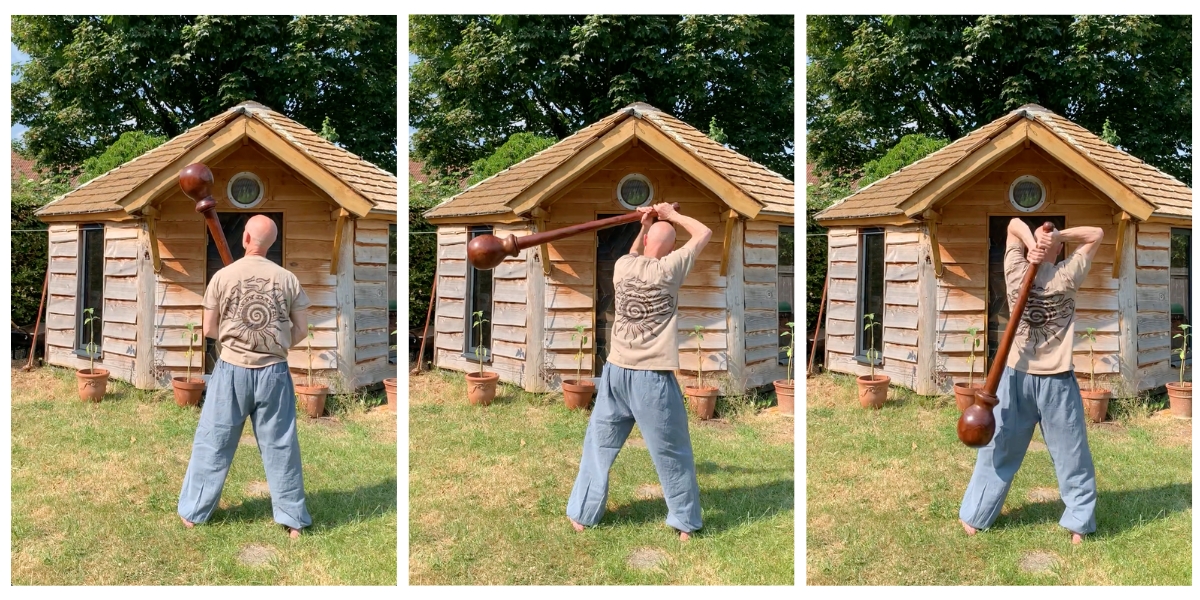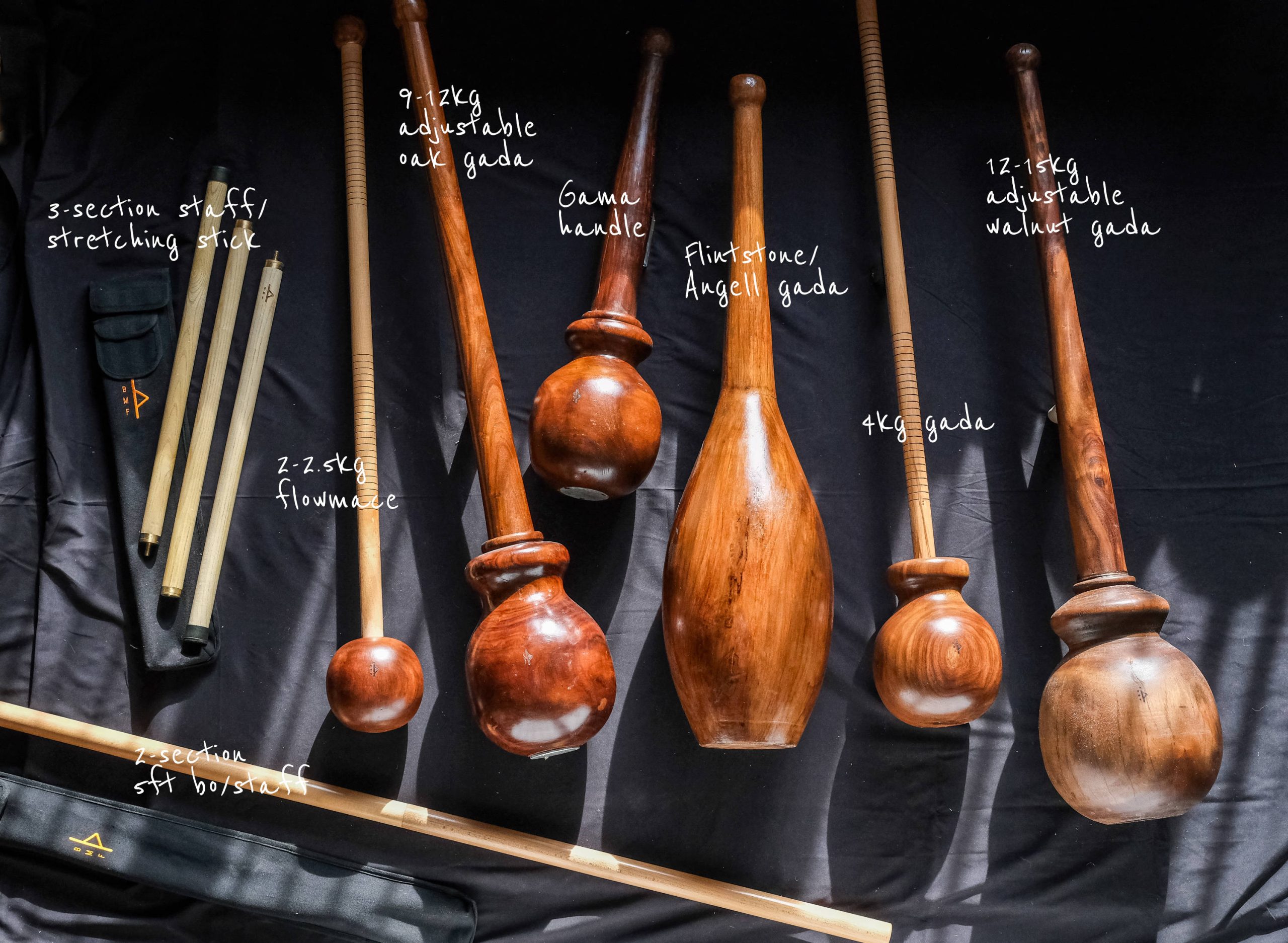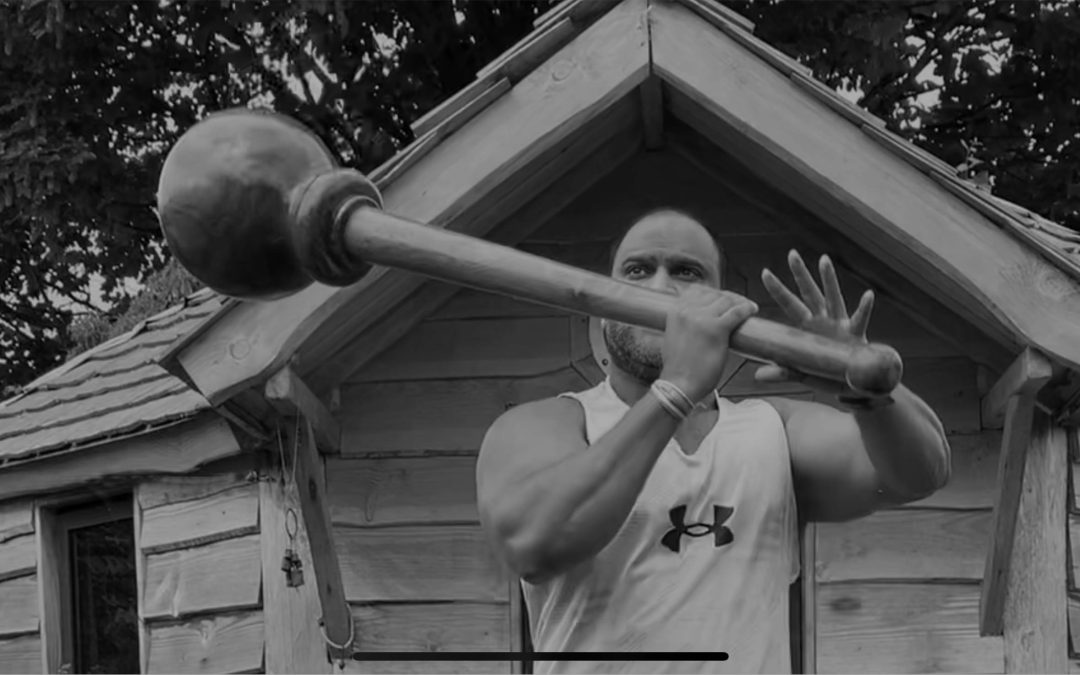Gada training is an ancient form of exercise that originated in India. It adds a rotational element to functional strength training that traditional gym equipment often lacks. As a result, the body has to engage coordination and activate more muscle groups, in order to stabilise and counter the centrifugal and gravitational forces working against it. Today, gada and mace training is gaining popularity among modern fitness enthusiasts around the world. In this article, we’ll explore the fundamentals of gada training and highlight some techniques to help get you started.
What is gada training?
Gada training revolves around the use of a mace (also known as a gada in India), which have been used for centuries by wrestlers and warriors to improve strength, endurance, and skill in combat. The gada is a simple tool, typically consisting of a long handle with a spherical head or weight. This is similar to a mace or a large Indian club, but with a longer lever, creating a much more levered force. This design allows the gada to be held either in one or both hands to perform rotational movements that engage the entire body, particularly the core, shoulders, and grip.

The benefits of gada training
Gada training offers a myriad of benefits, including improved muscle coordination, enhanced grip strength, and increased shoulder mobility. In addition, the dynamic movements involved in gada swinging will also contribute to better overall cardiovascular health. I am personally very impressed by the unconventional nature of the exercises performed, that break the monotony of regular gym machines and routines, making workouts more enjoyable and mentally stimulating, whilst engaging a wide range of muscles
Getting started with gada training
Before you begin, it’s essential to choose the right gada. They come in various weights and sizes, so selecting one that matches your current fitness level is crucial. Beginners should start with a lighter gada to avoid injury and gradually progress to heavier weights as their strength and technique improve. See our Gada Selection Guide to identify a suitable gada for your strength and ability.

Basic gada training techniques
Mastering the gada requires coordination and balance, as well as a strong focus on form to ensure safety and effectiveness. Training techniques often centre around the 360º swing and 10-to-2 pendulum swing. Both are foundational movements that involve swinging the gada in a controlled arc behind the head and over the shoulder. Both will challenge your stability and core strength as the gada moves in complete circles or arcs around the body. As you advance, you can explore variations and combinations of these basic movements to keep your workouts challenging and varied. There can also be a creative interplay for the gada to be moved around the practitioner and the practitioner to move around the gada.
Safety tips for gada training
When practicing gada training, ensure that you have plenty of space around you to avoid accidents and be mindful of external risks such as stray pets or children! Start with slow, controlled movements to get a feel for the gada’s momentum and gradually increase the intensity as you become more comfortable. If the gada feels a little too heavy, then move your hands closer to the weighted end.
I would strongly advise seeking guidance from a professional once you’ve got your first gada. They can provide personalised tips, a solid foundation of key skills, and will correct your form to prevent injuries. Check out this list to find gada training classes (online & in-person).
Conclusion
Whether you are a runner, boxer, grappler, or climber, or simply enjoy pushing your strength and fitness to the next level, gada training is a unique and effective way to enhance any fitness routine. Not only does gada training strengthen the body, but it also challenges the mind with intricate movements and techniques. With the right tools and attention to technique, gada training can be a rewarding and transformative practice.
Give it a try, and see for yourself the strength and vitality this ancient practice can bring to your life.


Comments 3